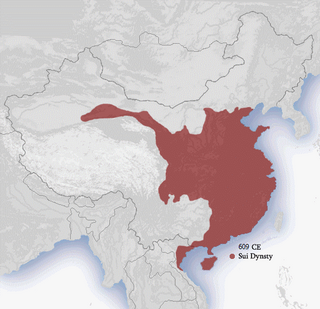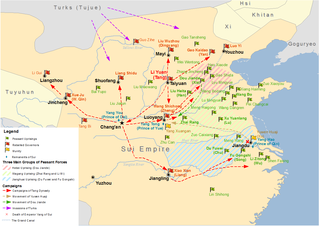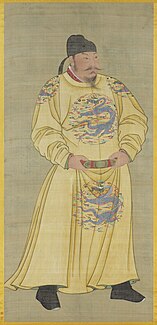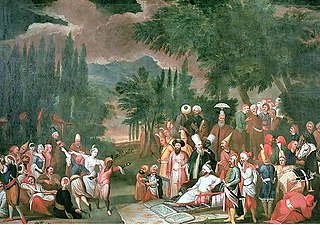 W
WSogdia or Sogdiana was an ancient Iranian civilization that at different times included territory located in present-day Uzbekistan, Tajikistan, Kazakhstan, and Kyrgyzstan, such as Samarkand, Bukhara, Khujand, Panjikent, and Shahrisabz. Sogdiana was also a province of the Achaemenid Empire, eighteenth in the list on the Behistun Inscription of Darius the Great. In the Avesta, Sogdiana is listed as the second best land that the supreme deity Ahura Mazda had created. It comes second, after Airyanem Vaejah, "homeland of the Aryans", in the Zoroastrian book of Vendidad, indicating the importance of this region from ancient times. Sogdiana was first conquered by Cyrus the Great, the founder of the Achaemenid Empire. The region would then be annexed by the Macedonian ruler Alexander the Great in 328 BC. The region would continue to change hands under the Seleucid Empire, Greco-Bactrian Kingdom, Kushan Empire, Hephthalite Empire, and Sasanian Empire.
 W
WAnnam was the southernmost province of Tang China from 679 to 866. Annam is the Vietnamese form of the Chinese name Annan, which means "the Pacified South" or "to pacify the South", a clipped form of the full name, the "Protectorate General to Pacify the South" Chinese: 安南都護府; pinyin: Ānnán Dūhùfǔ; Vietnamese: An Nam đô hộ phủ. In 679, the Annan Protectorate replaced the Jiaozhou Protectorate, also known as Jiaozhi, with its seat situated in Songping County (宋平縣). Annan was renamed to Zhennan for a brief period from 757-760 before reverting to Annan. After coming under attack by Nanzhao in 864, the Annan Protectorate was renamed Jinghai Military Command upon its reconquest by Gao Pian in 866. Today the same area is sometimes known as Tonkin, the "eastern capital" of Đại Việt. Locally, the area is known as Bắc Kỳ (北圻), the "northern area".
 W
WThe Battle of Baekgang or Battle of Baekgang-gu, also known as Battle of Hakusukinoe in Japan, as Battle of Baijiangkou in China, was a battle between Baekje restoration forces and their ally, Yamato Japan, against the allied forces of Silla and the Tang dynasty of Medieval China. The battle took place in the Baengma River or Baek River, which is the lower reach of the Geum River in Jeollabuk-do province, Korea. The Silla-Tang forces won a decisive victory, compelling Yamato Japan to withdraw completely from Korean affairs and crushing the Baekje restoration movement.
 W
WThe Battle of Irtysh River or Battle of Yexi River was a battle in 657 between Tang Dynasty general Su Dingfang and the Western Turkic Khaganate qaghan Ashina Helu during the Tang campaign against the Western Turks. It was fought along the Irtysh River near the Altai Mountains. Helu's forces, consisting of 100,000 cavalry, were ambushed by Su as Helu chased decoy Tang troops that Su had deployed. Helu was defeated during Su's surprise attack, and lost most of his soldiers. Turkic tribes loyal to Helu surrendered, and the retreating Helu was captured the next day.
 W
WThe conquest of the Western Turks, known as the Western Tujue in Chinese sources, was a military campaign in 655–657 led by the Tang Dynasty generals Su Dingfang and Cheng Zhijie against the Western Turkic Khaganate ruled by Ashina Helu. The Tang campaigns against the Western Turks began in 640 with the annexation of the Tarim Basin oasis state Gaochang, an ally of the Western Turks. Several of the oasis states had once been vassals of the Tang Dynasty, but switched their allegiance to the Western Turks when they grew suspicious of the military ambitions of the Tang. Tang expansion into Central Asia continued with the conquest of Karasahr in 644 and Kucha in 648. Cheng Zhijie commanded the first foray against the West Tujue, and in 657 Su Dingfang commanded the main army dispatched against the Western Turks, while the Turkic generals Ashina Mishe and Ashina Buzhen led the side divisions. The Tang troops were reinforced by cavalry supplied by the Uyghurs, a tribe that had been allied with the Tang since their support for the Uyghur revolt against the Xueyantuo. Su Dingfang's army defeated Helu at the battle of Irtysh River.
 W
WIn the years following Tang Taizong's subjugation of the Eastern Turkic Khaganate, the emperor began to exert his military power toward the oasis city-states of the Tarim Basin. These states, populated by Tocharian and Saka peoples, were loosely allied with the Western Turkic Khaganate. In 640, Emperor Taizong sent the military commander Hou Junji to defeat and annex Gaochang (Karakhoja)—the first attempt by any Chinese dynasty to set up a permanent military and political presence in the region since Fu Jian in the 4th century. In 644, after Karasahr (Yanqi)—an ally in the campaign against Karakhoja—turned against Tang and allied with the Western Turkic Khaganate, the Tang commandant at Karakhoja, Guo Xiaoke, attacked and captured the King of Karasahr, Long Tuqizhi, but Karasahr subsequently rebelled. In 648, the ethnically Turkic Tang general Ashina She'er who was the second son of Shibi Khan, attacked both Karasahr and Kucha in the northern Tarim, conquering both. Kashgar and Khotan in the western Tarim then also submitted to Tang, allowing the dynasty to dominate the region until it was briefly seized by Tibet during the reign of Emperor Taizong's son Emperor Gaozong.
 W
WThe first conflict of the Goguryeo–Tang War started when Emperor Taizong of the Tang dynasty led a military campaign against Goguryeo in 645 to protect his ally Silla and punish Generalissimo Yeon Gaesomun for killing King Yeongnyu. The Tang forces were commanded by Emperor Taizong himself, and generals Li Shiji, Li Daozong, and Zhangsun Wuji.
 W
WLingyan Pavilion was a small tower beside Sanqing Hall (三清殿) in the southwest of Taiji Palace (太極宮), Chang'an, the capital of the Tang dynasty. Its location in modern China is roughly in the north of Xi'an, Shaanxi.
 W
WThe military history of the Sui and Tang dynasties encompasses the period of Chinese military activity from 581 to 907. Although the Sui dynasty preceded the Tang, it was extremely short lived, ending in 618. The two dynasties share many similar trends and behaviors in terms of military tactics, strategy, and technology. It can therefore be viewed that the Tang continued the Sui tradition, or that the Sui set the precedent for the Tang dynasty.
 W
WThe Sino–Cham war was an invasion launched by the Chinese Sui dynasty against the Cham kingdom of Lâm Ấp in 605.
 W
WThe Sui dynasty was a short-lived imperial dynasty of China of pivotal significance. The Sui unified the Northern and Southern dynasties and reinstalled the rule of ethnic Han in the entirety of China proper, along with sinicization of former nomadic ethnic minorities within its territory. It was succeeded by the Tang dynasty, which largely inherited its foundation.
 W
WThe Tang campaign against Karakhoja, known as Gaochang in Chinese sources, was a military campaign in 640 CE conducted by Emperor Taizong of the Tang dynasty against the Tarim Basin kingdom of Karakhoja, based in the city of Turfan in Xinjiang. The Western Turks provided their ally Karakhoja with soldiers, but the army retreated when the Tang forces arrived. Karakhoja surrendered and the kingdom was incorporated as a Tang prefecture.
 W
WThe Tang campaign against Kucha was a military campaign led by the Tang dynasty general Ashina She'er against the Tarim Basin oasis state of Kucha in Xinjiang, which was aligned with the Western Turkic Khaganate. The campaign began in 648 and ended on 19 January 649, after the surrender of the Kuchan forces following a forty-day siege in Aksu. Kuchean soldiers tried to recapture the kingdom with the assistance of the Western Turkic Khaganate, but were defeated by the Tang army.
 W
WThe Tang campaigns against Karasahr were two military campaigns sent by Emperor Taizong of the Tang dynasty against the Tarim Basin kingdom of Karasahr, a vassal of the Western Turkic Khaganate. The city-state, which later became part of Xinjiang), may have been known to its inhabitants by the Tocharian name Agni, which was rendered Yanqi in Chinese sources. The first campaign in 644 was led by the Tang commander Guo Xiaoke, protector-general of the Anxi Protectorate in western China, who defeated the oasis state and a Western Turkic army and installed a Tang loyalist as ruler. The second campaign in 648, which was part of the campaign against Karasahr's neighboring state of Kucha, was led by a Turkic general of the Tang Dynasty, Ashina She'er, who defeated and conquered Karasahr.
 W
WThe Tang dynasty or Tang Empire was an imperial dynasty ruling China from 618 to 907, with an interregnum between 690 and 705. It was preceded by the Sui dynasty and followed by the Five Dynasties and Ten Kingdoms period. Historians generally regard the Tang as a high point in Chinese civilization, and a golden age of cosmopolitan culture. Tang territory, acquired through the military campaigns of its early rulers, rivaled that of the Han dynasty.
 W
WStanding Horse is a tomb figure created during the Tang dynasty in China. In ancient China, numerous tomb figurines and other artefacts were designed specifically to be buried with the deceased in large burial mounds. This large figurine features the use of Sancai, a glazing technique popular during the Tang dynasty.
 W
WThe transition from Sui to Tang (613-628) refers to the period between the end of the Sui dynasty and the start of the Tang dynasty. The Sui dynasty's territories were carved into a handful of short-lived states by its officials, generals, and agrarian rebel leaders. A process of elimination and annexation followed that ultimately culminated in the consolidation of the Tang dynasty by the former Sui general Li Yuan. Near the end of the Sui, Li Yuan installed the puppet child emperor Yang You. Li later executed Yang and proclaimed himself emperor of the new Tang dynasty.
 W
WThe Xuanwu Gate Incident was a palace coup for the throne of the Tang dynasty on 2 July 626, when Prince Li Shimin and his followers assassinated Crown Prince Li Jiancheng and Prince Li Yuanji. Li Shimin, the second son of Emperor Gaozu, was in an intense rivalry with his elder brother Li Jiancheng and younger brother Li Yuanji. He took control and set up an ambush at Xuanwu Gate, the northern gate leading to the Palace City of the imperial capital Chang'an. There, Li Jiancheng and Li Yuanji were murdered by Li Shimin and his men. Within three days after the coup, Li Shimin was installed as the crown prince. Emperor Gaozu abdicated another sixty days later and passed the throne to Li Shimin, who would become known as Emperor Taizong.
 W
WThe Xueyantuo tribe were an ancient Tiele Turkic people and khaganate in central/northern Asia who were at one point vassals of the Göktürks, later aligning with China's Tang Dynasty against the Eastern Göktürks.